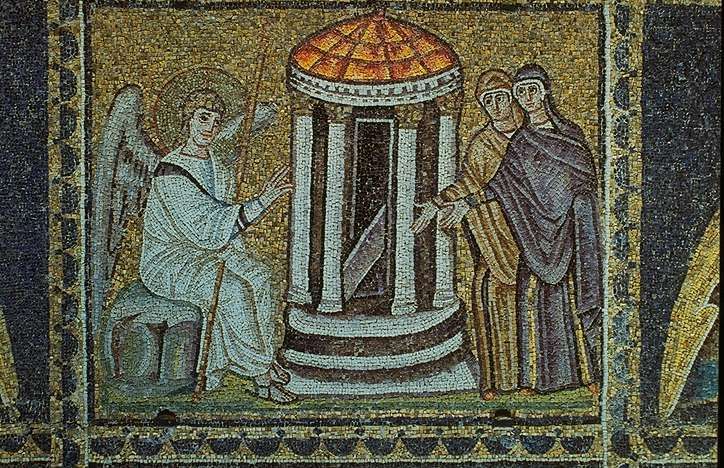
Site historique consacré à Marie, surnommée "la Magdaléenne" (alias Marie de Magdala, alias Marie-Madeleine)
27 Février 2020
Recommended Book on Academia / Livre recommandé sur Academia
![]()

Mary Magdalene The Unsuspected Truth (Part XXX)

Jesus kissing Mary Magdalene (Jesus of Nazareth, Zeffirelli, 1977)
En Français

Cliquer ci-dessous
/image%2F2630383%2F20180415%2Fob_5cedc4_imagesxc623j5h.jpg)
Le Baiser de Jésus à Marie-Madeleine - Marie appelée la Magdaléenne (Marie, Marie-Madeleine)
Recommended Book on Academia / Livre recommandé sur Academia Jésus embrasse Marie-Madeleine : Jesus of Nazareth ( Zeffirelli, 1977) English version Click below Recommended Book on Academia / Livr...
http://marie-la-magdaleenne.over-blog.com/2018/04/le-baiser-de-jesus-a-marie-madeleine.html
The companion of the Savior is Mary Magdalene. And Christ loved her more than all the disciples and used to kiss her often on her mouth.
This is one of two quotations that the author of The Da Vinci Code has used to claim that Mary of Magdala is the companion of Jesus. How do you respond to that?
He kisses the lips Who gives a right answer.
In this perspective, the kiss of Judas is – in the Gospels – the unequivocal sign of supreme betrayal!

The Kiss of Judas
(Nicodemus Silivanovich & Mikhail Schetinin, 1873-1885)
Touch me not; for I am not yet ascended unto the Father: but go unto my brethren, and say to them ...
Much has been written about this passage. According to an ancient tradition, Mary was simply eager to kiss her Son. This is what Saint Ephrem tells us:
Thus, after His victory over Sheol, when His mother saw it [the miracle of the Resurrection], she wished to express affection for Him like a mother.
The Gospel according to Mary simply echoes this tradition.
Mary opened her eyes, for they were lowered in order not to view the earth, scene of so many dreadful events. She said to Him with joy: “Rabboni, my Lord, my God, my Son, You are resurrected, indeed resurrected.” She wished to hold Him in order to kiss Him on the mouth. But He prevented her and pleaded with her, saying: “My mother, do not touch me. Wait a little [...] Now therefore, O my mother, hasten to tell my brothers, and say to them ...”
He said to her: “Mariham!” She recognized that it was her Son and wanted to embrace Him, exclaiming in Hebrew: “Rabboni” (which translates as ‘Master’). She ran to meet Him, wanting, in her joy, to embrace Him and to kiss his mouth – since no human being would be able to restrain his joy at such a moment! – but He wanted to hold her back and said to her: “Do not touch me ...”
And again, this is Mary speaking:
“I was so happy that I approached to embrace Him as was my habit. He said to me: “Do not touch me ...”
And there are many others ...
The Savior went away to ascend into the heavens [...] And the Father, Who was upon His throne, embraced His beloved Son, and He placed upon His head the great crown of glory and blessing, etc.

Mary kissing her late Son, fresco of the chapel of Sant’Andrea di Montiglio
Mary Magdalene
The Unsuspected Truth
Part XXXI
/image%2F2630383%2F20200228%2Fob_87e08e_gospel-of-jesus-wife.jpg)
The (Pseudo) Gospel of Jesus's Wife - Marie appelée la Magdaléenne (Marie, Marie-Madeleine)
Recommended Book on Academia / Livre recommandé sur Academia Mary Magdalene The Unsuspected Truth (Part XXXI) The "Gospel of Jesus's Wife" En F rançais Cliquer ci-dessous ...
http://marie-la-magdaleenne.over-blog.com/2020/02/the-pseudo-gospel-of-jesus-s-wife.html
Mary Magdalene
The Unsuspected Truth
Part I
/image%2F2630383%2F20200316%2Fob_a851eb_black-cover-png.PNG)
Mary Magdalene The Unsuspected Truth - Marie appelée la Magdaléenne (Marie, Marie-Madeleine)
Recommended Book on Academia / Livre recommandé sur Academia Mary Magdalene The Unsuspected Truth (Part I) Notice to the Reader This booklet contains most of the information and discoveries recently
http://marie-la-magdaleenne.over-blog.com/2019/06/mary-magdalene-the-unsuspected-truth.html
See also:
/image%2F2630383%2F20190619%2Fob_562a87_m-madeleine.jpg)
Jesus and Mary: The Kiss - Marie appelée la Magdaléenne (Marie, Marie-Madeleine)
En F rançais Cliquer ci-dessous English version Link below Since the publication of the Da Vinci Code, the idea that Mary Magdalene may have been the sexual and/or mystical companion of Jesus has ...
http://marie-la-magdaleenne.over-blog.com/2019/06/jesus-and-mary-the-kiss.html
/image%2F2630383%2F20190927%2Fob_f73b5d_domenico-ghirlandaio.jpg)
Mary, the bride of Jesus and the mutual kiss - Marie appelée la Magdaléenne (Marie, Marie-Madeleine)
Ridolfi Ghirlandaio, The Coronation of the Virgin (early 16th Century) En F rançais Cliquer ci-dessous English version Link below Ridolfi Ghirlandaio, The Coronation of the Virgin (sixteenth ...
http://marie-la-magdaleenne.over-blog.com/2019/09/mary-the-bride-of-jesus-and-the-mutual-kiss.html
/image%2F2569100%2F20190309%2Fob_292083_connaissance-hellenique.jpg)
Mary of Magdala: the mother of Jesus? - thierry-murcia-recherches-historico-bibliques.over-blog.com
Recommended paper on Academia / Article recommandé sur Academia English translation of an article published in french in: Connaissance hellénique , BILLETS, N°141 (July 2015) ...
/image%2F2630383%2F20190619%2Fob_56c628_vitrail-kilmore-church-scotland-mariem.jpg)
Which Mary is this? - Marie appelée la Magdaléenne (Marie, Marie-Madeleine)
Jesus and Mary The stained glass window of Kilmore Church (Scotland) Which Mary is this? Jesus and Mary , detail (stained glass window, Kilmore Church, Scotland) En F rançais Cliquer ci-dessous ...
http://marie-la-magdaleenne.over-blog.com/2019/06/which-mary-is-this.html